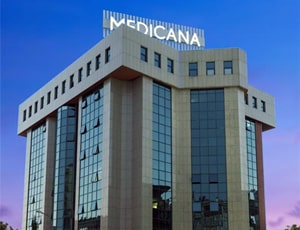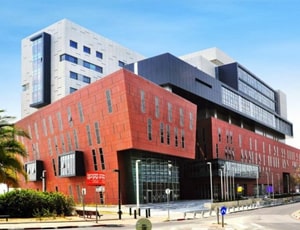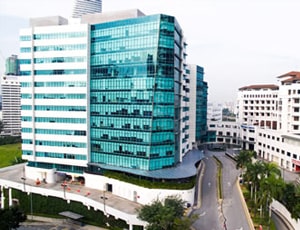Brachytherapy is an advanced form of radiation therapy. It is also known as internal radiation therapy. Radiation therapy is a type of cancer treatment in which ionizing radiation is used to destroy cancer cells and shrink the size of the tumors. The conventional form of radiation therapy is external beam radiation that projects radiation from a machine outside of the body. In case of internal radiation or brachytherapy, radioactive particles or sources that are internally placed in or next to the tumour site, are used to destroy cancer cells. Brachytherapy helps deliver a high radiation dose to the tumor, with minimal exposure to the surrounding healthy tissues.It thus allows delivering high doses of radiation to more-specific areas of the body.
Brachytherapy can be used for effective treatment of cervical, prostate, breast, skin, lung, head and neck, and gum cancer, in addition to tumors located in other parts of the body. Brachytherapy for prostate cancer is a commonly performed procedure. It is also used for the treatment of gum cancer as well. Brachytherapy is an alternative treatment for gum cancer and is conducted who are unfit to undergo a surgery or do not need one.
Brachytherapy can be completed in less time than other conventional radiotherapy techniques. Brachytherapy for prostate cancer and other cancers is often performed on an outpatient basis and patients typically have to take fewer brachytherapy sessions, as compared to external radiotherapy treatment for cancer. This makes brachytherapy more accessible and convenient to many patients. Most of the patients are able to tolerate brachytherapy very well with fewer side effects.
There are two types of brachytherapy treatment:
Brachytherapy may be used alone as a curative treatment or in conjunction with other types of cancer treatment. Sometimes brachytherapy is used after surgery to destroy any cancer cells that may remain. This is also done in case of brachytherapy for prostate cancer. Your physician is able to understand better when you need brachytherapy. He or she will provide you with information about the preparation of the treatment and possible adverse reactions.
Preparation for brachytherapy may include:
Your physician might give you some specific instructions on how to prepare for your brachytherapy procedure before the treatment starts.
Brachytherapy treatment plan is created and governed by a radiation oncologist, who is a highly trained physician specializing in treating cancer with radiotherapy. The radiation oncologist will require a team, including a medical physicist, dosimetrist, radiation therapist, radiation therapy nurse and in some cases, a surgeon to conduct the procedure. However, the radiation oncologist is the one who evaluates the patient and determines the appropriate therapy, including how much radiation to deliver.
In permanent brachytherapy, needles that are pre-filled with the radioactive brachytherapy seeds are inserted into the tumor. Then the needle or device is removed, leaving the radioactive seeds behind. Sometimes these seeds may be implanted in sessions using a device that inserts them individually at regular intervals. An appropriate imaging means such as an ultrasound, X-ray, MRI or CT scan may be used to assist the physician in positioning brachytherapy seeds at the right place. After implantation, some additional imaging can be done to verify seed placement.
Temporary brachytherapy starts with placing a delivery device, such as a catheter, needle, or applicator, into the tumor. Methods of imaging such as an ultrasound, MRI, or CT scan will help position the radiation sources correctly. The delivery device can either be inserted into a body cavity such as vagina (intracavitary brachytherapy) or applicators such as needles or catheters can be inserted into body tissues (interstitial brachytherapy). Device implantation will depend on the location of cancer.
Radiation using brachytherapy procedure can be delivered at three different levels:
For patients who have received brachytherapy for prostate cancer or any other types of cancer, limiting physical activity for at least three to five days is important. You can experience some level of grogginess after the procedure, however, it will last for only a few hours. You will be prescribed a few emergency medicines that you can take in case you experience pain or any other type of discomfort.
There are some side effects associated with all kinds of radiation therapy. However, the acute, sub-acute, or long-term side effects of brachytherapy depend on the location of the tumor being treated and the type of brachytherapy being used.
Some acute side effects of brachytherapy are
But these are temporary side effects and usually resolve within a few days following completion of treatment.
Usually, brachytherapy does not cause any long-term side effects, but in a few cases, it may cause urinary and digestive problems. But in that case as well, long-term side effects are usually mild or moderate in nature and there are many palliative medicines that are available to cope with the symptoms.

Istanbul, Turkey
Founded in 1999, Medicana Camlica is a specialty hospital of the Medicana Group which is well known ...more
![]() Private Rooms
Private Rooms
![]() Translator
Translator
![]() Nursery / Nanny Services
Nursery / Nanny Services
![]() Airport Pick up
Airport Pick up

Tel Aviv, Israel
Assuta Medical Center is a leading private hospital in the capital city of Tel Aviv in Israel. Assut...more
![]() Accommodation
Accommodation
![]() Airport Transfer
Airport Transfer
![]() Choice of Meals
Choice of Meals
![]() Interpreter
Interpreter

Kuala Lumpur, Malaysia
History Parkway Pantai Hospital in Kuala Lumpur, Malaysia is operating under the Parkway Pantai gro...more
![]() Accommodation
Accommodation
![]() Airport Transfer
Airport Transfer
![]() Choice of Meals
Choice of Meals
![]() Interpreter
Interpreter

Radiation Oncologist
Ghaziabad, India
19 Years of experience
USD 28 for video consultation

Radiation Oncologist
Noida, India
22 Years of experience
USD 42 for video consultation
Q: Is brachytherapy effective?
A: Brachytherapy is considered to be more effective in the treatment of many types of cancer, as compared to other forms of treatment, including radiation. It has quick recovery time and the patient can return back to a normal routine within a few days.
Q: How long does HDR brachytherapy take?
A: A typical session of HDR brachytherapy may last a little over 30 minutes.
Q: How long are brachytherapy seeds radioactive?
A: The radioactivity of the seeds used to deliver radiation decreased rapidly. The half-life of Iodine-125 isotope used in brachytherapy for prostate cancer is around 60 days.
Q: What is the success rate of brachytherapy?
A: For low-risk patients, the 5-year survival rate is around 95 percent.